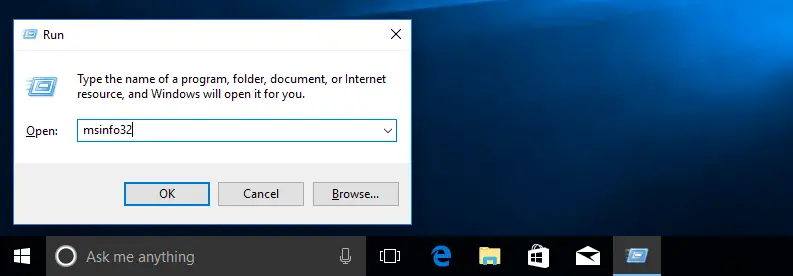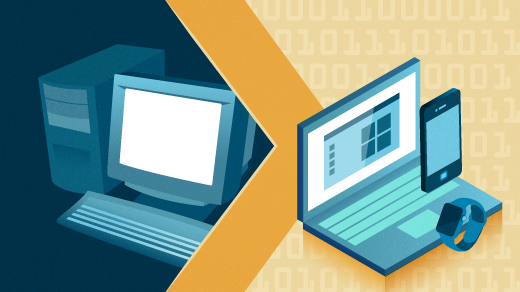I Have Two Hard Drives Install Ubuntu And Windows 10
Installing Ubuntu on a separate hard drive alongside Windows 10. Ask Question 0. I have some trouble with installing Ubuntu on my Windows 10 laptop. My laptop has two drives. One SSD (which Windows is installed on) and one HDD (on which I store my data). I want to install Ubuntu 16.04 on my HDD.
I have Windows 10 installed on one drive and I have another solid state drive I want to install Windows 7 on. I have quite a few questions concerning on how this works.
What I am concerned about is software & driver related issues. I keep only games & software on my C drive, nothing else. I use many adapters that require different drivers depending on 10 or 7, many different methods for old game fixes and I use certain software like Rollback Home Rx which creates snapshot restore points rather than using the built-in windows restore. Would you be capable of installing Rollback Rx Home on both drives or using Aomei Backupper to create system backups with no conflicts? Can you set the boot to seal off certain partitions or hard drives so there should be no conflicts?

I Have Two Hard Drives Install Ubuntu And Windows 10 64
Also, can I use the same serial key I used for my Windows 10 for the Windows 7? It was a Windows 7 key originally.
One last thing, I also want to install Ubuntu on the same hard drive that will have Windows 7 in the future. Is this also possible and won’t cause problems? Anyone with any information regarding these matters I’d greatly appreciate the help/info. Thanks.
You probably know how hard it is to install an external hard drive in a Windows 10 PC. Basically, you turn off the Windows 10 computer, plug the USB or eSATA cable into your computer, turn it on … and you’re finished. But, what if you need to install a second internal hard drive on your Windows 10 device?
Yes, external hard drive manufacturers have fancy software. No, you don’t want it. Windows knows all the tricks. If you install one additional hard drive, internal or external, you can set up File History. Install two additional drives, internal or external, and you can turn on Storage Spaces. None of the Windows 10 programs need or want whatever programs the hard drive manufacturer offers.
Installing a second internal hard drive into a Windows 10 PC that’s made to take two or more hard drives is only a little bit more complex than plugging an external drive into your USB port. Almost all desktop PCs can handle more than one internal hard drive. Some Windows 10 laptops can, too.
Here’s how to install a second internal hard drive on a Windows 10 computer:
- Turn off your PC. Crack open the case, put in the new hard drive, attach the cables, and secure the drive, probably with screws. Close the case. Turn on the power, and log in to Windows.
If you need help, the manufacturer’s website has instructions. Adding the physical drive inside the computer case is really very simple — even if you’ve never seen the inside of your computer — as long as you’re careful to get a drive that will hook up with the connectors inside your machine. For example, you can attach an IDE drive to only an IDE connector; ditto for SATA. - Right-click in the lower-left corner of the screen, and choose Disk Management.
The Disk Management dialog box appears.
- Scroll down the list, and find your new drive, probably marked Unallocated.
The new drive is identified as Disk 0. - On the right, in the Unallocated area, tap and hold down or right-click, and choose New Simple Volume.
The New Simple Volume Wizard appears. - Tap or click Next.
You’re asked to specify a volume size.
- Leave the numbers just as they are — you want to use the whole drive — and tap or click Next.
The wizard asks you to specify a drive letter. D: is most common, unless you already have a D: drive. - If you really, really want to give the drive a different letter, go ahead and do so (most people should leave it at D:). Tap or click Next.
The wizard wants to know whether you want to use something other than the NTFS file system, or to set a different allocation unit. You don’t.
- Tap or click Next; then tap or click Finish.
Windows whirs and clunks, and when it’s finished, you have a spanking new drive, ready to be used.
If you have three or more drives in or attached to your PC, consider setting up Storage Spaces. It’s a remarkable piece of technology that’ll keep redundant copies of all your data and protect you from catastrophic failure of any of your data drives.

Changing Your Windows 10 C: DRIVE
Whoa nelly! If you’ve never seen a Windows 10 PC running an SSD (solid-state drive) as the system drive, you better nail down the door and shore up the, uh, windows. Changing your C: drive from a run-of-the-mill rotating platter to a fast, shiny new solid-state drive can make everything work so much faster. Really.
Unfortunately, getting from an HDD (hard disk drive) C: to an SSD C: ain’t exactly 1-2-3.

Part of the problem is the mechanics of transferring your Windows 10 system from an HDD to an SSD: You need to create a copy (not exactly a clone) that’ll boot Windows. Part of the problem is moving all the extra junk off the C: drive, so the SSD isn’t swamped with all the flotsam and jetsam you’ve come to know and love in Windows.
Most of the drive cloning/backup/restore techniques developed over the past decade work when you want to move from a smaller drive to a bigger one. However, replacing your HDD C: drive with an SSD C: drive almost always involves going from a larger drive to a smaller one.
The LifeHacker website has an excellent rundown of the steps you need to take to get your old hard drive removed and have everything copied over to your new SSD, using a backup program called EaseUS Todo Backup Free. It’s not a simple process.